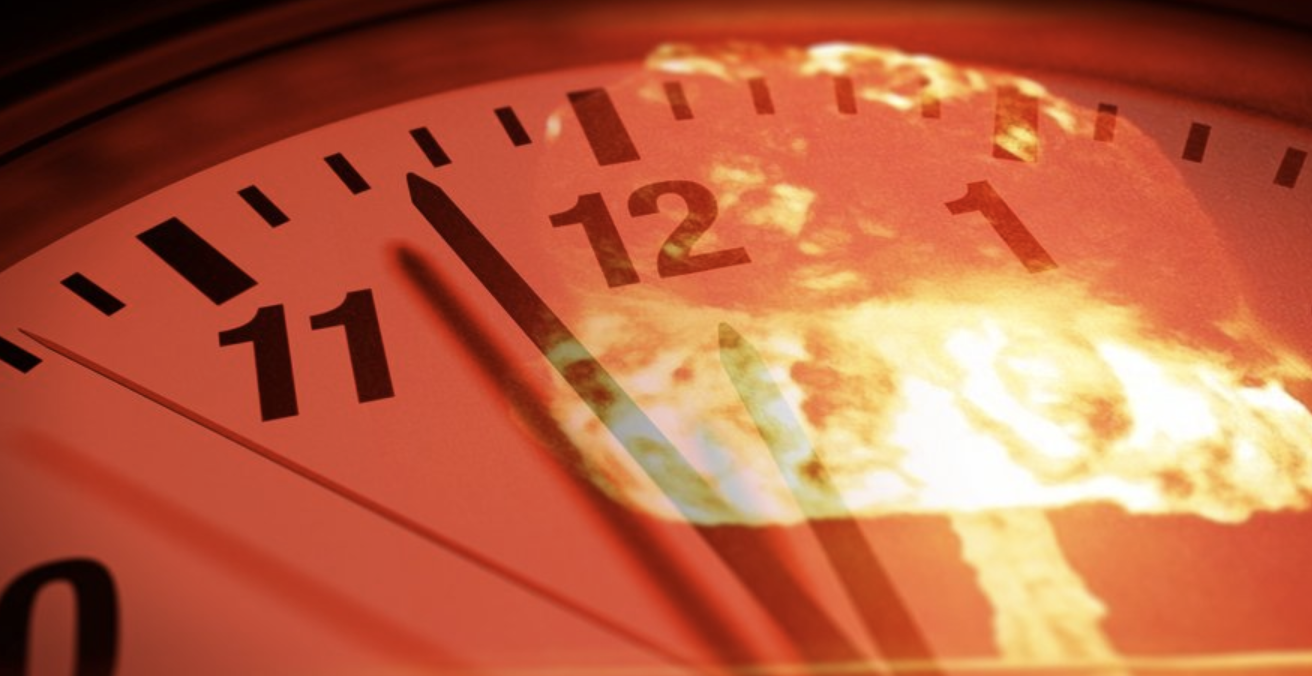

The closer the time to midnight, the closer the world is considered to be to catastrophe. It started at seven minutes to midnight but the outlook has got worse in recent years. The countdown was established in 1947 by experts at the bulletin who were working on the Manhattan Project to design and build the first atomic bomb. It comes as intelligence chiefs have warned Russia could invade Ukraine by the end of January with a massive assault involving 100,000 troops and thousands of tanks across ten fronts.Īlso to consider is the conflict in Iraq between Iranian and American forces “intensified” after Trump’s decision to withdraw from the nuclear deal in 2018. There are also flashpoints of escalating conflict between North Korea and the US seen during the 1990s and when the rhetoric between Kim-Jong Un and Donald Trump escalated. Speculation mounted in 2021 about where the next world war may break out as relationships between Western allies such as the US and UK and their Eastern rivals Russia, Iran, China and North Korea became more fraught than ever.ĭoomsday Clock says humanity remains dangerously close to apocalypse Trackers said they considered factors this year like the prolonged pandemic, proliferation of nuclear weapons in Iran, China and North Korea, state-sponsored disinformation campaigns, and disruptive technologies. The Doomsday Clock countdown – which acts as a metaphor for global apocalypse – takes into account the likelihood of emerging threats like war breaking out and the impact of Covid as well as advances in biotechnology and artificial intelligence. Issues like the prolonged pandemic and proliferation of nuclear weapons in Iran, China and North Korea were taken into account. “Because humans created these threats, we can reduce them,” Dr.

Bronson said there were “several bright spots and many disturbing trends” taking into consideration for the 2022 clock. Two questions are considered when the scientists make their decision – is humanity safer or at greater risk compared to last year, and is humanity safer or at greater risk compared to the last 75 years?ĭr. Pierrehumbert, Scott Sagan and Sharon Squassoni. Speakers included Hank Green, Herb Lin, Professor Raymond T. This year, it was deemed the world is “no safer than it was at was last year” and the clock will remain at 100 seconds to midnight. The Bulletin of the Atomic Scientists hosted a live virtual news conference today to reveal when they think the world will end. Keeping the same position means the clock’s keepers believe the threat of an apocalypse is as bad as it has been over the last 24 months. The Doomsday Clock will remain at 100 seconds to midnight for a third year running. Scientists pinpoint when the sun will explode Top-secret US nuclear submarine seen for first time in decades

"In this time of genuine crisis, governments around the world too often abdicated responsibility, ignored scientific advice, did not co-operate to communicate effectively and consequently failed to protect health and welfare of their citizens.I was scammed by a $70 million lottery scheme when trying to fix my roofīob Saget’s widow breaks down over ‘heartbreaking’ loss in first interview "The pandemic revealed just how unprepared and unwilling countries and the international system are to handle global emergencies properly," Bronson continued. Rachel Bronson said that "we recognize that humanity continues to suffer as the COVID-19 pandemic spreads around the world." Speaking at last year's conference, Bulletin President Dr. The clock measured 17 minutes to midnight proceeding the cold war, the furthest away it has been in its history. The clock has been moved backward in its history, and the Bulletin says it serves as a call-to-action to reverse the hands. This is the closest humanity has been to midnight in the clock's history.
#ATOMIC SCIENTISTS DOOMSDAY CLOCK UPDATE#
Thursday's announcement marked the 75th update of the clock, representing the likelihood of a man-made international catastrophe that could cause humanity's annihilation. The organization was founded in 1945 by Manhattan Project scientists. The Bulletin of the Atomic Scientists includes 13 Nobel laureates and is based in Chicago.


 0 kommentar(er)
0 kommentar(er)
